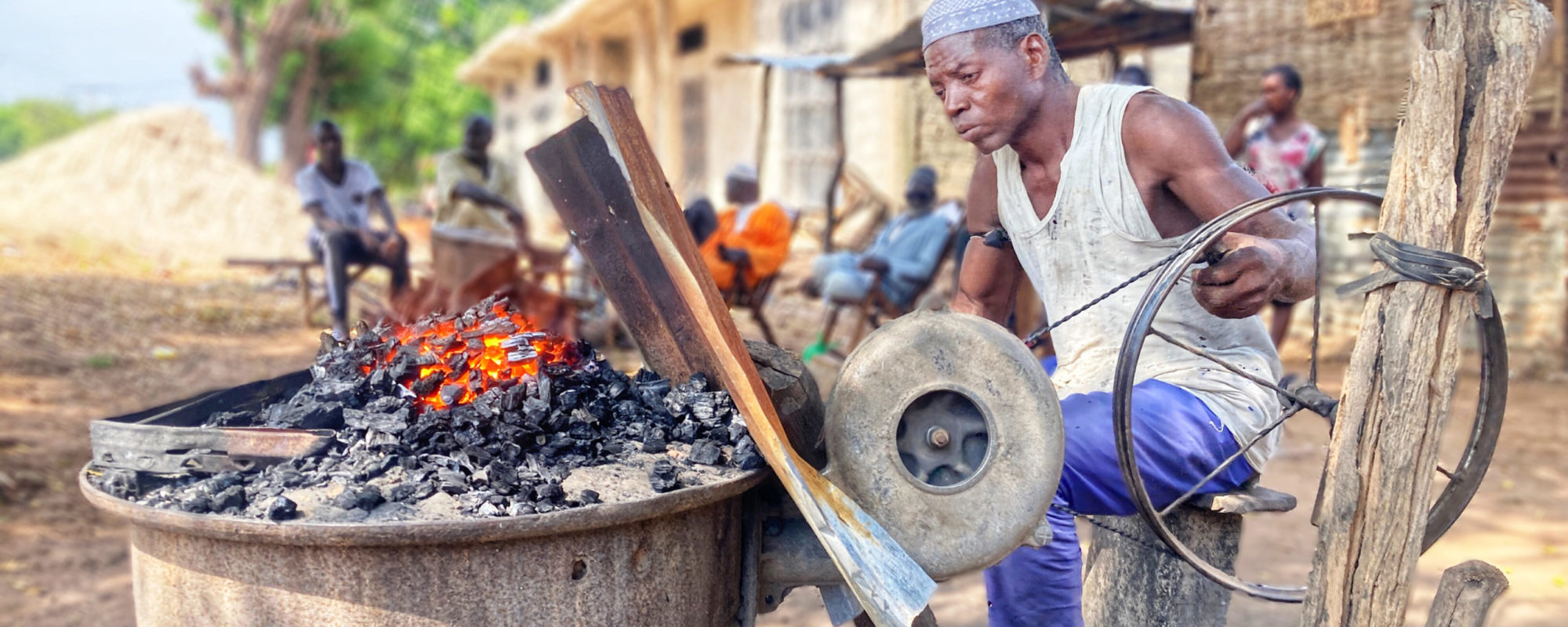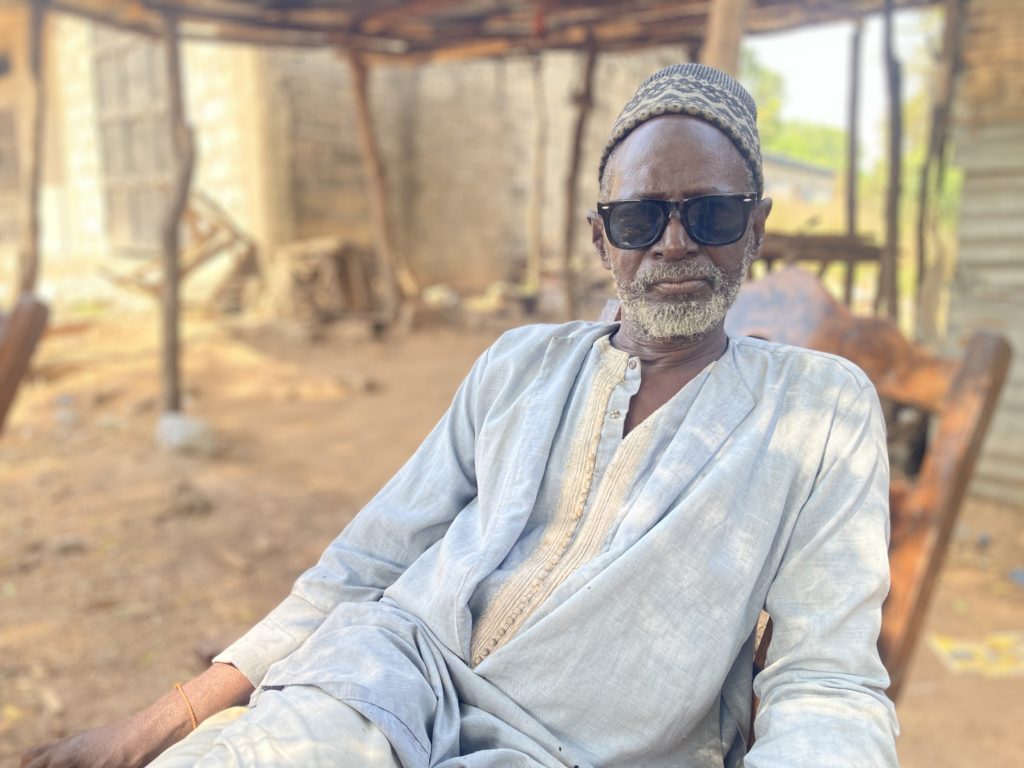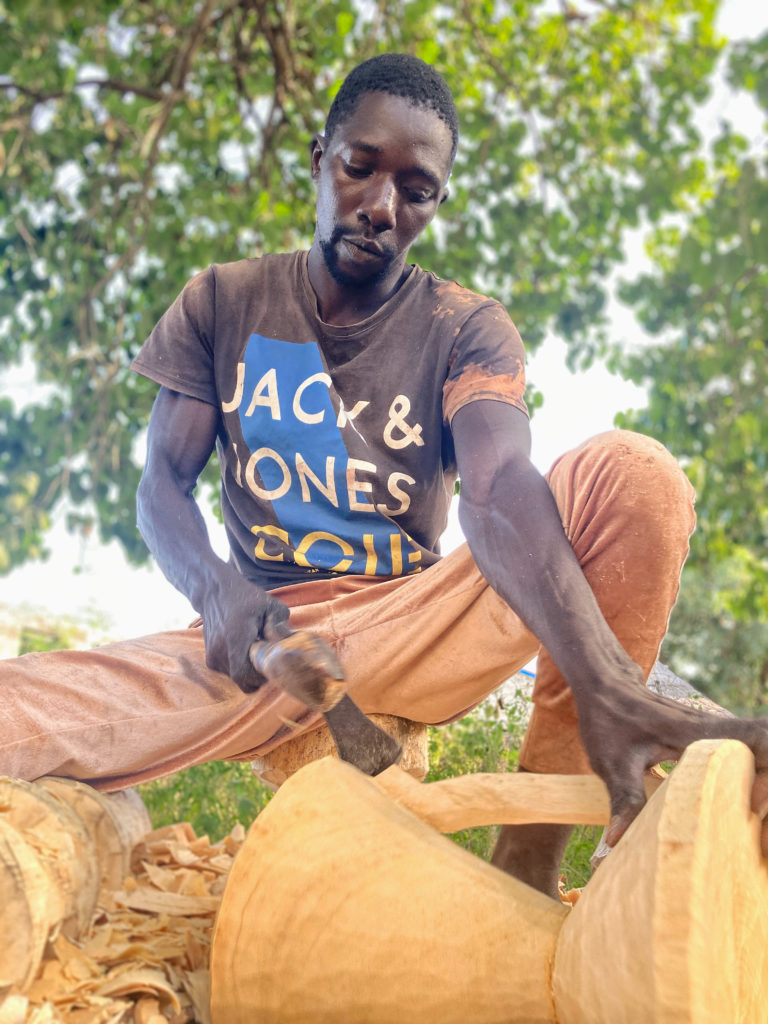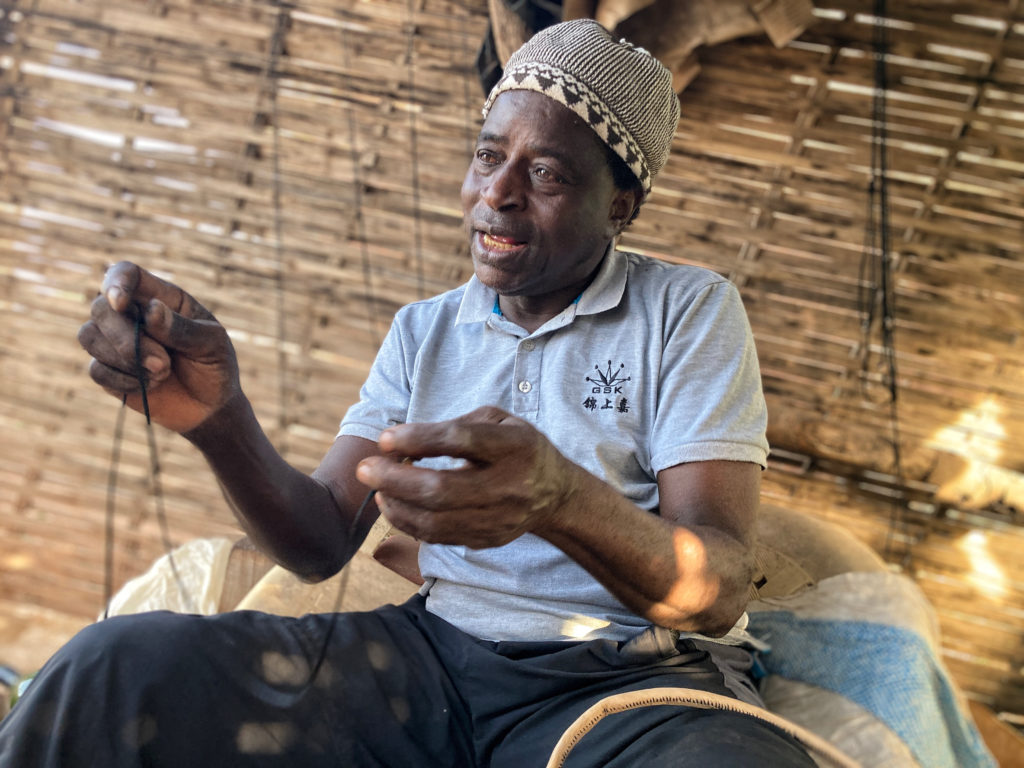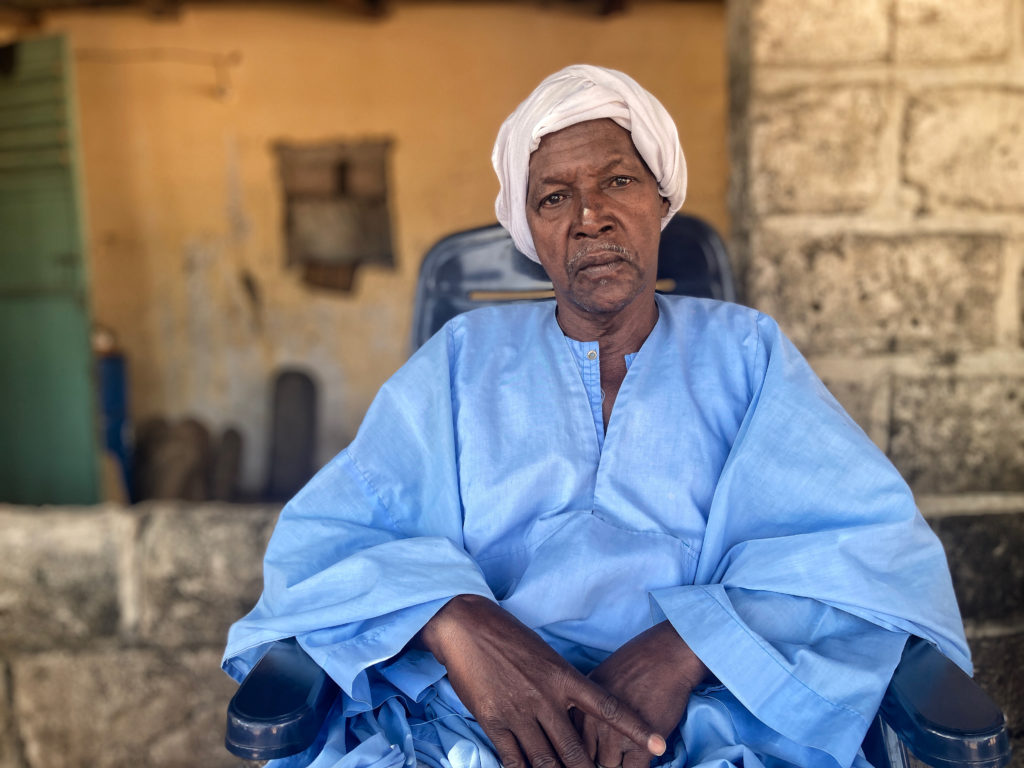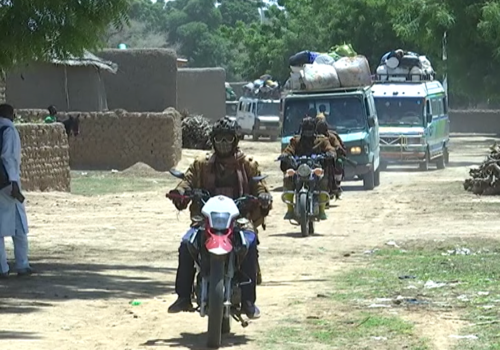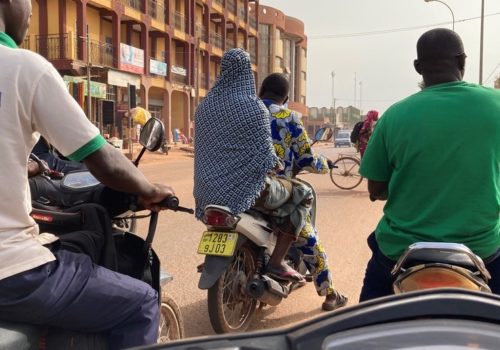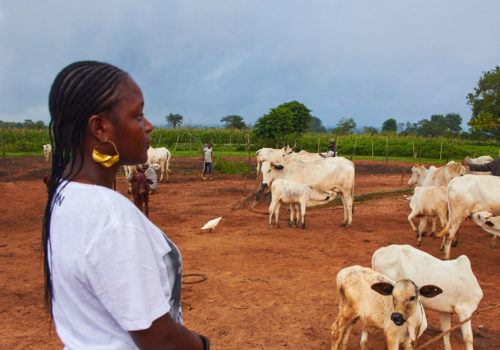KOLDA, Senegal —”Most people have forgotten the old stories of where we come from,” the elderly Ibrahima Conteh whispered, looking me in the eye as his fingers danced across the vertical strings of a kora, a West African musical instrument built from a calabash bowl covered in animal hide connected to a long neck. “But for us the jalibe,” he continued, “it is our job to remember.”
I was speaking with Conteh last month under a mango tree outside his home in southern Senegal. I was in Kolda, the largest city of a wider region known as the Fuladu, to find out if people still follow the ancient artisanal guilds (blacksmiths, wood workers, bards, etc) which used to dominate society, and if so, how they manage to make a living in modern society.
West Africa’s artisanal guilds trace back to the The Kurukan Fuga, the founding constitution of the 1235 Mali empire, which divided society into nobles, spiritual leaders, artisanal guilds and slaves. Among the artisanal guilds, known as nyamakala in the Manding languages, each family surname connoted its own trade, passed down from father to son, often along with a mystical origin story.
This basic division of society originated with the larger Maninka ethnic group, and was adopted by neighboring societies that changed aspects of the system based on their own customs, spreading it across what is now the countries of Guinea, Mali, Mauritania, Senegal, Gambia and Guinea-Bissau. As centuries passed, the guilds survived by constantly adapting to the zeitgeist, from the gradual spread of Islam over centuries to the piecemeal abolition of slavery to the expansion of capitalism and colonialism.
However, during my time as a Peace Corps volunteer in Kolda, it did not seem to me that the guilds played any decisive role in day-to-day life. When I needed shoes, I bought them in a second-hand market that originated in American good will stores. When women needed pots and knives to cook with, they bought cheap tin and plastic products manufactured in North Africa. When young people wanted to listen to music, they played it from their phones through (inevitably) blown-out bluetooth speakers manufactured in China.
But I noticed signs of an older order. Walking around Kolda, I would sometimes be stopped by a jalijo, one of the bards who would offer to sing my praises for a small fee. From time to time, I would encounter a small village where residents had one of only two distinct surnames identified with a specific trade. I also encountered that traveling outside the Fuladu, from stumbling across a market of handcrafted specialized leather goods in Labe, Guinea to being told how blacksmiths in central Mali are sought out for their purported mediation skills.
Knowing there was more to the story than I had picked up as a Peace Corps volunteer, I went back to Kolda to seek out people who still practiced skills passed down by their ancestors. Today, it is known as tawangal, which means literally “to be found in” in the Fulakunda language. The following photo series portrays just a few of the people I met.
Notably absent are any women, the majority of whom—due to the gendered division of labor—are responsible for cooking, cleaning and looking after children while their husbands, brothers or fathers make money outside the house. I also chose to stick to the artisanal guilds and did not include profiles of nobles and slaves at their request.[1]
Each of the following stories has its own contours, but certain motifs run throughout. As much as the guilds have lost their monopoly as the producers of the tools their communities depend on, they are still valued as the keepers of tradition and guardians of knowledge that helps maintain societal stability.
Waylube (Blacksmiths)
“The blacksmiths are the origin of everything,” 65-year-old Issa Diallo proclaimed as he reclined in a wooden chair next to his family forge. “Look at the woodworkers,” he added tauntingly. “The axe the woodworker uses to fell a tree, we made that blade.” Issa instructed his soft-spoken younger brother Kamisa, sitting behind us, to forge a hoe-head for me to witness the process. Over the next 30 minutes, I watched as Kamisa turned a rectangular brick of iron into an essential farming tool by heating it in a mound of red-hot charcoal and pounding the glowing shard into a triangular blade. [2]
West African blacksmiths have been forging farming implements, weapons of war, household objects and items imbued with deep spirituality for over a millennium. Making the tools for farming and warfare gave them a special status among the artisanal guilds and in many places, they were said have mystical powers.




However, while elements of the craft have endured over the centuries, many of the techniques and materials have changed considerably. Today, Issa and Kamisa—both of whom learned the trade from their father—can’t compete with mass-produced tools manufactured abroad and sold in the market. Only one of Kamisa’s sons learned his father’s skills, and he practices solely in the rainy season when farmers regularly need their tools fixed.
While their products no longer drive society, in Kolda at least, blacksmiths maintain some of their mystique. Knowing this was a secretive subject, I mentioned to Issa that someone had told me blacksmiths have supernatural powers, and asked if that was true. Kamisa looked to Issa to see how he would respond. “The person who told you that is not lying,” Issa said with a sly grin, “but that is all I’ll say.”
Laobe (Woodworkers)
When I brought up the blacksmiths taunt to Ousmane Drammeh, a 35-year old woodworker, he laughed. “The blacksmith was using a hammer, wasn’t he,” he retorted. “What was the handle made out of?” This joking relationship between blacksmiths and woodworkers harks back to centuries of close relations and a deep unspoken understanding that despite the grandstanding, society needs both groups.
I spoke with Drammeh about woodworkers’ place in the modern Fuladu region in the dappled shade of a large tree behind his family house on the outskirts of Kolda. He recounted how he had ridden his bicycle into the forest that morning, identified an appropriate tree, felled it, divided the wood into 4-foot segments, strapped the lumber to the back of his bicycle and peddled home. After lunch, he carved the basic shapes of the stools for which he had been commissioned and set to work on each individually. As he chiseled away the rough edges of his initial work with an increasingly delicate touch, the jagged cuts gave way to smooth edges and each stool came into sharp focus.



Before mass-produced items chipped away at their monopoly, Drammeh explained, laobe carved everything from buckets to eating utensils to the small canoes fishermen used in the rainy season. They knew which kind of wood was best for each object, how to harvest it without disturbing the forest spirts and how the finished products should be treated.
These days, he said, his main products are handles for tools, stools and large mortar and pestles used by women for pounding grain and mixing ingredients. Nevertheless, he said, when his son is a little older, he plans to pass on what he learned from his father. “How else will the blacksmiths have handles for their tools?” he asked with a smirk.
Garankebe (Leather workers)
When Malam Kambaye was young, his father sent him to the fields instead of teaching him how to work with leather. “I was a young man,” Kambaye, now in his 50s, told me from his bamboo-paneled shack hanging from the side of the road, “and it was better to use my strength in the rice fields.”
It was different for his ancestors, Kambaye added. They needed their youthful energy to deskin the animal, remove any hair and flesh, pound the hide, soak it in salt or urine, apply a tanning agent, and stretch it across a rack to dry. Back then, leather workers lived on the edge of town because the smell of their tanneries was so pungent. “Even though our work stank, they needed us,” he proudly said, listing all the products they used to make including shoes, bags, buckets and sheaths.
By the time Kambaye was born, local leather production had been decimated and almost all the aforementioned objects were produced elsewhere and imported for cheaper. Today, Kambaye said, his only constant business is stitching together the small talismans known as gri gri worn by many Muslims in Senegal and surrounding countries.




As if on cue, on a young man poked his head into Kambaye’s shack. After agreeing on a price (around $1), the young man handed over a carefully folded piece of paper with Qur’anic inscriptions and held out his arm to be measured. Without breaking eye contact, Kambaye folded a layer of card stock around the inscription, cut the leather to size, and began sewing the charm into a small pouch. Ten minutes after the man had arrived, Kambaye handed over the finished talisman.
As our conversation came to an end, I asked Kambaye if any of his children had taken up his craft. “Weren’t you listening?” he scolded. “They should use their youthful energy elsewhere! Only when they’re older and can’t use their bodies will I teach them how to sew leather.”
Sernaabe (Religious leaders)
Some of the guilds are responsible for producing more than just material objects. For instance, the sernaabe, also known as marabouts, tend to communities’ spiritual needs. Historically, they were men said to have a deep connection with the spirit world who would use their knowledge to help people understand, counter and even harness supernatural forces. As Islam began slowly spreading in the 14th century, sernaabe gradually jettisoned their outwardly animist practices and began incorporating the Quran and identifying as Muslim.
Aliou Balde was born in the early 1950s in a small village near the border of Guinea-Bissau. His father was not a scholarly man, but still had access to special knowledge with which he could catch glimpses of the future. Balde claims no such ability but says that growing up surrounded in such an environment made him want to study the Quran. When he was older, he travelled around Senegal and Ivory Coast studying the Islamic holy book before returning to Kolda to take on students of his own.




Speaking over the din of his students’ recitations, the gravely-voiced Balde explained that there are different kinds of sernaabe today. Some are itinerant teachers, giving Qur’anic instruction to young people during breaks in the secular school year. Others serve as imams, leading their flocks in prayer and advising on religious matters. Some work in a more private capacity, seeing clients one by one and preparing individualized charms that are stitched into wearable talismans or hung in houses.
“Me,” Balde said gesturing at himself, “I do it all.” As his students grew in number, he explained, he realized he needed more space, so he founded a small village outside Kolda. With funds from donors in the Persian Gulf, he constructed a new mosque, for which he is the imam, and took on more students, who now number in the 40s. The last few years, his sons have grown old enough to take over some of his teaching responsibilities, freeing him to offer individualized consulting. “The Fuladu will always need sernaabe,” Balde said. “Our knowledge shapes good behavior and ensures that the next generation continues our beliefs.”
Jalibe (Bards/jesters)




The jalijo, also known as a griot, is often described by outsiders as a bard or jester. This comparison does not do jalibe justice. Historically, they were sage musicians and poets who recorded and shared history through epic ballads. They served as royal advisers, using their detailed knowledge of history to help rulers shape the present and future.
Ibrahima Conteh’s father was a jalijo (jeli in his mother tongue of Jahanke) who died before he could pass on the old songs and stories. In his late teens, Conteh packed a few clothes into a small bag and travelled a day north to Gambia to learn to play the kora (the quintessential West African instrument) and memorize histories from his uncle. After around five years of shadowing him, Conteh returned to Kolda, where he met Momodou Sissokho, a fellow jalijo from a notable Bissau-Guinean family who knew the histories and how to play and build the instruments.
The usually light-hearted Sissokho, whom I have known for years, became much more serious as he began describing the jalijo’s role as the connective tissue of society in his compound in Kolda. “It is our job to know everyone in the community,” he explained, “where they come from and their place in society.” Jalibehelp facilitate introductions for newcomers. They convey marriage proposals. They can serve as local mediators. They are always present at important celebrations and festivals, both to reflect on the past and record the present through song.
After our discussion, Conteh picked up his kora and began plucking a pleasant hypnotic melody. As Sissokho drummed the calabash body, they traded off singing about my time in Kolda before reciting the history of the 1867 battle of Kansala, when the armies of the Futa Jallon defeated the Mandinka-speaking king of Kaabu, paving the way for the emergence of the contemporary majority-Fulbe Fuladu region.
Toward the end of my time with Conteh and Sissakho, I asked what the future held for jalibe in Kolda. “Journalists and musical artists have taken some of our work, but there will always be jelibe,” Conteh replied. “You know why? No one knows Kolda, present and past, as we do. You can read your books about ancient battles, but their knowledge came from us. We alone know the full history, and we know how to use it to nurture harmony.”
Endnotes
[1] The descendants of enslaved people I spoke with were uncomfortable having their photos taken or stories told despite, in their own telling, the fact that having enslaved ancestors now has little bearing on their lives. At the same time, people of free-born descent mentioned that some nobles (a small uneducated minority in their view), still refuse to marry their daughters to men whose ancestors were enslaved. For more on the contested history of slavery in Kolda, see Alice Bellagamba, “Legacies of Slavery and Popular Traditions of Freedom in Southern Senegal (1860-1960)” in Journal of Global Slavery, vol. 2 (2017).
[2] I have chosen to use the Fulakunda names for the different groups, although I have also identified when other names are more commonly used elsewhere in West Africa.

